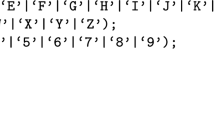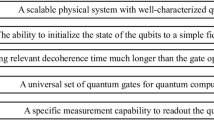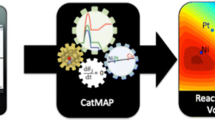Abstract
Information is often encoded as an aperiodic chain of building blocks. Modern digital computers use bits as the building blocks, but in general the choice of building blocks depends on the nature of the information to be encoded. What are the optimal building blocks to encode structural information? This can be analysed by substituting the operations of addition and multiplication of conventional arithmetic with translation and rotation. It is argued that at the molecular level, the best component for encoding discretized structural information is carbon. Living organisms discovered this billions of years ago, and used carbon as the back-bone for constructing proteins that function according to their structure. Structural analysis of polypeptide chains shows that an efficient and versatile structural language of 20 building blocks is needed to implement all the tasks carried out by proteins. Properties of amino acids indicate that the present triplet genetic code was preceded by a more primitive one, coding for 10 amino acids using two nucleotide bases.
Similar content being viewed by others
References
Agarwala R, Batzoglou S, Dančik V, Decatur S E, Hannenhalli S, Farach M, Muthukrishnan S and Skiena S 1997 Local rules for protein folding on a triangular lattice and generalized hydrophobicity in the HP model;J. Comput. Biol. 4 275–296
Arnez J G and Moras D 1997 Structural and functional considerations of the aminoacylation reaction;Trends Biochem. Sci. 22 211–216
Creighton T E (ed.) 1992Protein folding (New York: W H Freeman)
Crick F H C 1966 Codon-anticodon pairing: The wobble hypothesis;J. Mol. Biol. 19 548–555
Crick F H C 1968 The origin of the genetic code;J. Mol. Biol. 38 367–379
Eriani G, Delarue M, Poch O, Gangloff J and Moras D 1990 Partition of tRNA synthetases into two classes based on mutually exclusive sets of sequence motifs;Nature (London)347 203–206
Fersht A 1999Structure and mechanism in protein science: A guide to enzyme catalysis and protein folding (New York: W H Freeman)
Grover L 1997 Quantum mechanics helps in searching for a needle in a haystack;Phys. Rev. Lett. 79 325–328 [quant-ph/9706033]
Hart W E and Istrail S 1997 Lattice and off-lattice side chain models of protein folding: Linear time structure prediction better than 86% of optimal;J. Comput. Biol. 4 241–259
Ikehara K 2002 Origins of gene, genetic code, protein and life: Comprehensive view of life systems from a GNC-SNS primitive genetic code hypothesis;J. Biosci. 27 165–186
Kolaskar A S and Ramabrahmam V 1982 Obligatory amino acids in primitive proteins;Biosystems 15 105–109
Lehninger A L, Nelson D L and Cox M M1993Principles of biochemistry second edition (USA: Worth Publishers)
Lewin B 2000Genes VII (Oxford: Oxford University Press)
Patel A 2000 Quantum algorithms and the genetic code;Proc. Winter Institute on Foundations of Quantum Theory and Quantum Optics (Calcutta);Pramān.a — J. Phys. 56 367–381 [quant-ph/0002037]
Patel A 2001 Quantum database search can do without sorting;Phys. Rev. A 64 034303 [quant-ph/0012149]
Ramachandran G N, Ramakrishnan C and Sasisekharan V 1963 Stereochemistry of polypeptide chain configurations;J. Mol. Biol. 7 95–99
Author information
Authors and Affiliations
Rights and permissions
About this article
Cite this article
Patel, A. Carbon — the first frontier of information processing. J Biosci 27, 207–218 (2002). https://doi.org/10.1007/BF02704910
Received:
Accepted:
Issue Date:
DOI: https://doi.org/10.1007/BF02704910




